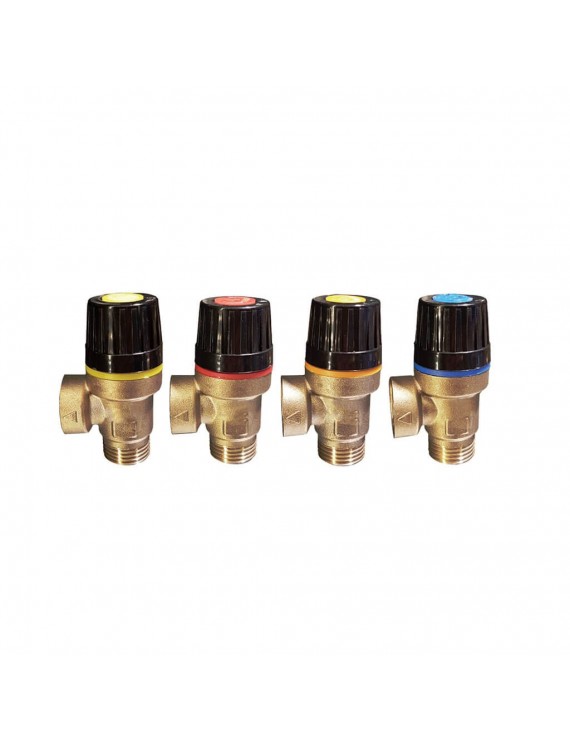VALF EMNİYET İÇİN 6 BAR (SABİT AYARLI)
VALF EMNİYET İÇİN 6 BAR (SABİT AYARLI)
Emniyet Ventili Nedir?
Emniyet ventili, basınçlı tank ve diğer sistemlerde belirlenen limit sıcaklık veya basınca gelindiğinde otomatik olarak gaz salınımı yapan vana mekanizmasına verilen isimdir. Kazan ve tanklarda emniyeti sağlamak amacıyla emniyet ventilleri kullanılması önem arz etmektedir. Emniyet ventilleri aynı zamanda eşanjör ve basınçlı tanklarda yardımcı eleman olarak kullanılmaktadır. Ventil içindeki membran aşınmaya karşı dirençli olarak imal edilmektedir. Açma basınçları sabit olup, istendiğinde set değerleri fabrikada önceden ayarlanarak sunulabilmektedir.
Tesisatta bulunan akışkan basıncının aşırı yükselerek tesisata, tesisata bağlı farklı bir cihaza veya vanaya zarar vermesini önlemek amacıyla sisteme monte edilir. Karşı basınç prensibiyle çalışan yaylı bir mekanizmaya sahiptir. Kazan kapasitesine ve tesisattaki su miktarına göre değişik bağlantı çapları mevcuttur. Ventil kapasitesinin yetersiz kaldığı durumlarda birden çok emniyet ventili "seri şekilde” hatta bağlanabilmektedir.
Emniyet Ventili Kullanım Alanları
Şofben Tesisatı,
Kalorifer Kazan sistemlerinde
Tankların gaz salınımında
Emniyet Ventili Yapısal Özellikleri
Yapısal Özellikler
Tahliye Bağlantısı
G 3/4"B
Stres Yayı
ZAMAK
Tesisat Bağlantısı
G 3/4"
Kullanım Özellikleri
Uygunluk
CE 0036
Maksimum Su Sıcaklığı
110 °C
Depolama Sıcaklıkları
-20....+60°C
Maksimum Basınç
2.5 Bar
